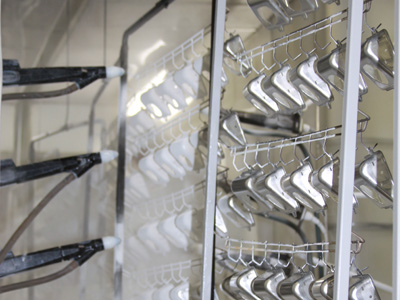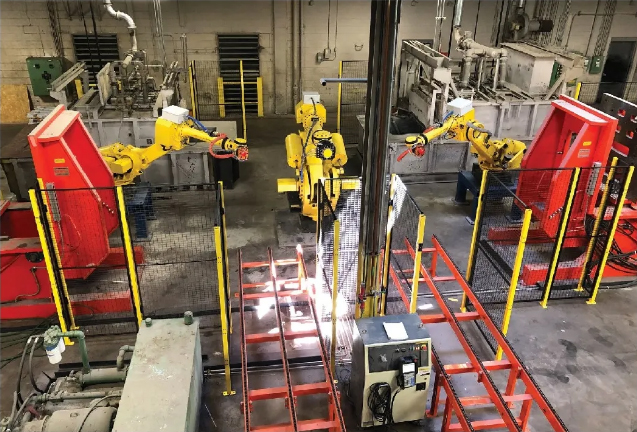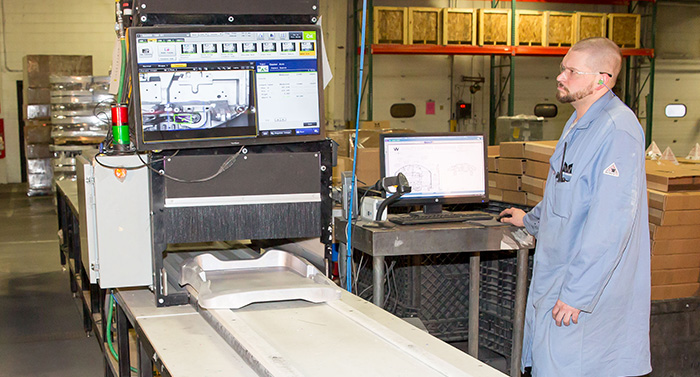Welcome to our comprehensive guide on aluminum metal casting, where the art and science of crafting intricate aluminum structures come to life. Whether you’re a seasoned professional or a curious beginner, our guide offers invaluable insights into various aluminum casting techniques. Discover the nuances of melting and molding processes that transform raw aluminum into essential components used across industries. Join us as we delve into the versatility of aluminum casting, highlighting its economic benefits and the innovative technologies enhancing its applications worldwide.
Aluminum Metal Casting
Aluminum Metal Casting: Comprehensive Guide to Aluminum Casting Techniques

Introduction to Aluminum Casting Techniques
Aluminum casting is a highly versatile and widely used metal casting process in the industry today. Within this guide, we’ll explore the various casting methods, providing an overview of how each technique contributes to producing high-quality aluminum components. The focus will include discussing the role of mold casting and examining the unique process of handling molten aluminum. Through understanding these essential techniques, you’ll gain insights from an industry perspective, ensuring your knowledge aligns with the standards expected in metal foundry work. Dive deeper with videos available on YouTube that visualize these processes.
Understanding Aluminum Alloys in Metal Casting
Aluminum casting is a multifaceted process that relies heavily on the specific characteristics of various aluminum alloys. Understanding these alloys is foundational for anyone involved in metal casting, as the choice of alloy dramatically influences the properties of the finished aluminum parts. This comprehensive guide will delve into the significance of different aluminum alloys, examining how they affect the overall casting process, contribute to high strength-to-weight ratios, and bolster corrosion resistance. By examining the relationship between alloys, casting molds, and specialized casting equipment, we reveal how each component in the process—from the use of crucibles to solidification techniques—affects the final aluminum cast components. This exploration will highlight the meticulous considerations necessary for achieving optimal casting results and ensuring the performance of aluminum components meets stringent industry standards.
The Role of Aluminum Alloys in Casting
In the sphere of metal casting, aluminum alloys are championed for their adaptability and efficiency, making them the go-to materials for numerous casting methods. These alloys, consisting chiefly of aluminum, are enhanced with elements such as magnesium, silicon, and zinc, which imbue them with exceptional strength, an enhanced resistance to corrosion, and ease of usability. Mastering these materials is indispensable for any foundry professional aiming to maximize the capabilities of casting equipment and significantly elevate the quality of the final product. Aluminum’s inherent lightweight quality grants components a crucial high strength-to-weight ratio, a paramount factor in sectors like aerospace and automotive, where material efficiency is directly linked to performance.
When aluminum alloys enter the casting molds, they transition from molten metal into various complex shapes. Crafting with these alloys demands meticulous regulation of the molten metal’s temperature and the casting environment. Utilizing the appropriate casting tools and robust crucibles is key to sidestepping casting defects and ensuring that the materials maintain their integrity throughout the casting process. Careful management of the solidification and cooling phases is necessary. An adeptly executed casting step averts casting defects, guarantees the consistency of aluminum alloy properties, and assists in creating durable aluminum parts.
Solidification is influenced by several factors, including the type of pattern employed and the design of the sprue, which dictates the molten metal flow into the cavity. The distinctive properties of each alloy determine specific casting equipment needs to uphold a defect-free casting process. The corrosion resistance of aluminum alloys presents another compelling benefit. This corrosion resistance not only prolongs the life of components but also renders them suitable for extensive use in challenging environments that could otherwise degrade the quality of lesser materials.
Drawing from scholarly articles and accumulated field experience, foundry workers can better harness the corrosion-resistant properties of these alloys, ensuring casting molds yield superior-quality cast aluminum components that align with, if not exceed, industry benchmarks. Moreover, the design and creation of casting mold patterns significantly impact the performance and efficiency of aluminum alloys in production. Proper alignment of casting molds with alloy properties is essential to maximize volume production capabilities without compromising quality.
Foundry professionals often modify variables such as cavity design and mold material to fine-tune solidification conditions and achieve the desired component properties. This meticulous attention to detail greatly influences the effectiveness and efficiency of casting equipment during the solidification phase, encouraging superior outcomes. Casting equipment and materials range beyond molds and crucibles, necessitating that foundry personnel maintain a thorough understanding of all tools involved in volume production.
These tools must endure the intense conditions of handling molten aluminum while enhancing the precision of the solidification step. High-caliber tools, coupled with an in-depth comprehension of casting process intricacies, empower metal foundries to minimize casting defects, resulting in robust components with consistent quality. Ultimately, the adept use of aluminum alloys in casting hinges on a profound grasp of the materials, casting tools, and exacting control over the entire process.
This control ensures products not only fulfill specific design and functional specifications but also withstand environmental challenges. By continually refining techniques and employing premium casting tools, the aspiration to produce defect-free aluminum components becomes increasingly attainable, accommodating industry demands for high-performance, lightweight solutions that are integral to contemporary manufacturing. This methodology elucidates the pivotal role aluminum alloys play in ameliorating the effectiveness and prestige of metal foundries worldwide.
Comprehensive Guide to Casting Methods
In the world of aluminum metal casting, knowing various casting methods is crucial for creating top-notch components. This guide explores casting processes such as investment casting, die casting, and mold casting, emphasizing their unique attributes. By highlighting differences in casting methods, you’ll see how each impacts the quality, cost, and efficiency of production.
We break down casting processes into steps, looking at the role of casting equipment, molds, and solidification strategies. Types of molds, sprue patterns, and casting processes like lost wax, are vital components. Understanding investment casting, die casting, and permanent mold casting techniques will offer insight into how casting methods adapt to metal foundry needs.
Casting equipment choices and casting methods significantly affect production outcomes. For example, die casting and permanent mold casting methods are renowned for efficient production, while each casting process varies in costs and benefits. Whether employing casting methods for forging plates or crafting intricate components, this guide helps you navigate the casting process.
By learning different casting methods, from lower cost and resource-intensive techniques in mold casting to more sophisticated ones like investment casting, you can optimize your approach. The focus on casting methods, solidification, sprue, and pattern options paves the way for quality results. Take a step into the world of aluminum metal casting and embrace the casting process techniques ideal for your needs.
Key Differences in Casting Processes
Understanding the key differences in casting processes is crucial for selecting the right aluminum casting method. Among the diverse casting methods, die casting and mold casting stand out. Die casting relies on high-pressure casting equipment to inject molten aluminum into a steel mold or die, ensuring excellent surface finishes and dimensional accuracy. The die casting method is perfect for high-volume production, despite the high initial cost. In contrast, mold casting methods, such as permanent mold casting, utilize gravity to solidify aluminum, offering a blend of cost-effectiveness and quality.
Another method, investment casting, often called lost wax casting, uses a wax pattern to create a heat-resistant ceramic mold. This casting process suits complex parts but is costlier. Among traditional techniques, sand mold casting involves creating a pattern imprinted in a mold, then pouring aluminum to fill the cavity. Though versatile, this casting process yields a coarser texture. Evaluating casting equipment, material properties, and production volume is vital in choosing the right method, affecting solidification and sprue design.
Each casting method requires an understanding of pattern creation, influencing the casting’s cooling phase and final quality. For die casting, pattern precision is critical to ensure optimal molten aluminum flow into the sprue. With lost wax or permanent mold casting, creating durable, hot-resistant patterns enhances component quality. Foundry professionals optimize these processes by selecting suitable casting methods and materials, balancing cost and quality to produce superior aluminum metal products.

Advantages of Aluminum Parts in Casting
Aluminum parts offer significant advantages in casting, largely due to their unique properties that align with the requirements of modern manufacturing techniques. The following sections delve into the specific benefits of using aluminum in casting, including their lightweight characteristics and high strength-to-weight ratio. We will explore how these advantages translate into practical benefits for various applications, highlighting aluminum’s role in enhancing production efficiency and component performance across multiple industries.
The Benefits of Using Aluminum for a Lightweight Result
One notable advantage of using aluminum in casting is its high strength-to-weight ratio, which results in lightweight yet strong components. Industries love aluminum parts due to their ease of handling and reduced transportation costs. During the casting process, aluminum naturally forms a protective oxide film, enhancing its corrosion resistance and reducing maintenance needs over time. Its lower melting point compared to other metals means fewer energy requirements during heating and solidification, translating into cost savings and quick production cycles.
In the realm of casting methods, aluminum offers versatility. By employing techniques like die casting or permanent mold casting, manufacturers can adapt to specific project requirements. Aluminum’s fluid nature in its molten state makes it ideal for intricate designs and complex shapes, ensuring that patterns are thoroughly filled without flaws. Professionals in the casting process leverage aluminum’s properties, improving efficiency and product quality. Optimizing pattern designs, such as refining sprue structures, can further enhance the result.
Articles and video resources highlight these processes, underscoring the importance of improved techniques for high-volume production. The ability to recycle aluminum without property degradation emphasizes its role in promoting a circular economy. Foundries can lower their environmental impact while meeting production standards, balancing economic and ecological concerns. Therefore, aluminum parts in casting not only deliver performance but also align with sustainable practices. Understanding casting methods and refining techniques boosts quality, meeting modern manufacturing expectations.
Applications of Aluminum Cast Components
Aluminum cast components are indispensable in numerous industries due to their versatile applications and superior qualities. These parts are lightweight, corrosion-resistant, and cost-effective, making them ideal for a wide range of uses. This section delves into key areas where aluminum cast components shine, including the automotive, aerospace, and construction industries. Explore how casting methods and casting equipment enhance these components’ functionality, boosting efficiency and performance across various sectors.
Choosing the Right Aluminum Casting Technique
Selecting the appropriate aluminum casting method is vital for ensuring the quality and efficiency of production. This section will guide you through the factors that influence optimal casting choices, such as production volume, material properties, and casting equipment. We’ll also discuss how these factors impact the selection between various casting processes like die casting, permanent mold casting, and others, ultimately making or breaking the success of your aluminum casting project.

Factors to Consider for Optimal Casting
Choosing the right aluminum casting technique involves understanding key factors that impact the casting process’s quality and efficiency. A primary consideration is the type of aluminum alloys used. Different alloys possess unique properties, affecting the casting method’s success. Foundry workers must tailor their approach according to materials, whether it be die casting or using a specific casting mold. The intricacy of the component’s design is critical too. Techniques like investment casting, known for precision and quality finish, may be optimal for complex designs or patterns. Understanding alloys’ flow characteristics and solidification behavior is crucial, as they influence design replication. Experience in handling molten metal and managing solidification steps helps reduce casting defects caused by poor mold filling. The choice of casting equipment also plays a pivotal role. Foundry professionals must ensure available equipment matches the chosen process. High-pressure casting equipment is essential for die casting to ensure every cavity fills. Considerations of casting defect management are critical too. Each casting process has its defect risks, like shrinkage cavities. Mitigating these defects requires understanding casting processes and adjusting process parameters. Lastly, integrating sustainable practices is vital. Aluminum’s recyclability allows foundries to reduce waste. Strategically assessing these factors helps foundry workers align with environmentally conscious practices without compromising efficiency. Selecting the right aluminum casting technique requires evaluating materials, production volumes, and complexities to optimize casting operations and foster a commitment to innovation and sustainability.
In conclusion, aluminum metal casting is an intricate yet rewarding discipline that strikes a delicate balance between art and science. As you embark on your aluminum casting journey, continually refine your skills and stay abreast of technological advancements. This will not only enhance your craftsmanship but also foster innovation and sustainability in your projects. Thank you for exploring this comprehensive guide, and may your casting endeavors be both successful and inspiring.
